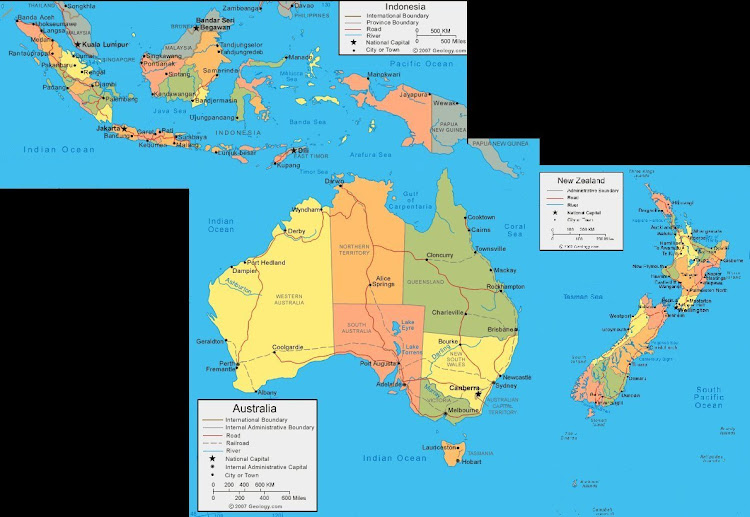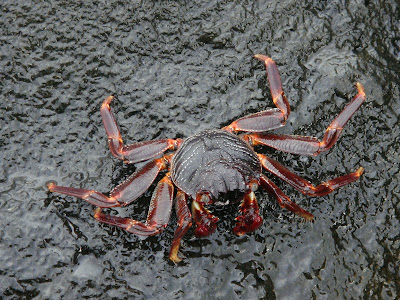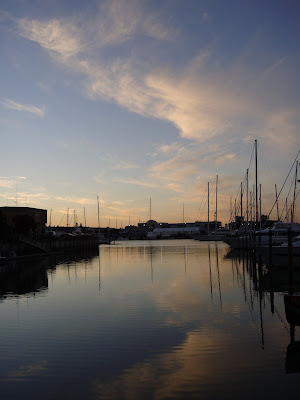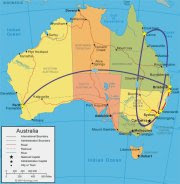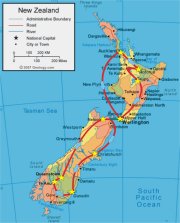We crossed the Date Line during our flight to arrive in Tahiti the day before we left New Zealand, very appropriately in the middle of the night. The airport is in Faa, about 6 km from Papeete the Capital of French Polynesia. And after collecting our luggage we were horrified to hear that a taxi for the 3km to our hotel would be about 20 quid! Eeek! So Gary in fractured French asked a friendly family lurking in the airport shop the way to the Sheraton, received a rapid and extremely prolonged response (and thankfully hand-pointed directions)... so we set out to walk instead. 3km? Peanuts! Actually we didn’t even have to walk that far. As we strolled down what we frantically hoped was the right road a bus which was more like a converted red-and-white lorry picked us up. So we arrived at our glamorous 5 star resort on the back of a lorry laden with rucksacks. I bet they don't get that here often! To their credit, the people at reception managed not to stare at us too much as we checked in.
And I suppose our week here has continued much along the same lines. We were as determined as we have been all of this trip to do the things we really wanted to despite the cost, but we have no problems with getting most of our food from a supermarket and cramming it into the mini-bar-fridge! I mean, we had several nice (and pretty pricy) meals out when we felt like it. And best of all, we really splashed out and went scuba diving again.
The Sheraton resort is a 20 min stroll from the centre of lively Papeete, perched on the edge of the island over looking the lagoon. As you'd expect, it has pretty gardens, a lovely pool and Jacuzzi, restaurants... and dive centre. As we'd been deprived of diving on the Great Barrier Reef we couldn't resist, which was just as well as this was bay far the best scuba diving we've done yet. The first of the two dives in particular was sensational. We were taken by boat to the outside of the barrier reef that forms the lagoon around Papeete, and then descended 20 meters or so to a lush coral garden filled with tropical fish. It was all very vivid and beautiful, but this was completely eclipsed by the denizens. A huge leopard ray flapped its way through the water in the distance, giant tuna drifted by, and of course there were the sharks! LOADS of them. More than you could count... hundreds must live in that region as there were always more than 20 near us. And I mean near us - they would brush past us as we swam, avoiding touching us by inches. Most were quite small black fin tipped sharks, only 1 to 1.5 meters long, but they still looked the part - every inch evil predators. There were a few grey reef sharks around too, and these were slightly bigger, up to 2 meters long. But the star was the lemon shark that dropped in - a 3 meter long monster! We all went very still as she swam through our group before meandering on with a flick of her tail. I don't think I'd have made much more than a mouthful for her.
Which I suppose brings me to the most fascinating point - we were completely safe. Apart from being advised to swim with our hands close to our bodies to avoid having our fingers nibbled we just drifted along as usual. They simply weren't interested in eating us. But they were very interested in eating a large tuna steak our dive guide let out of plastic bag he was carrying at the end of the dive. He warned us to stay back first, then flicked the bag open, the tuna popped out, and - Zooooooooom! Sharks can MOVE! They are incredible! They zipped to the meat in a fraction of a second and devoured it voraciously, swerving about each other to get a good bite. I've never seen anything like it.
The second dive was also fantastic, although perhaps not quite so sensational! We visited two wrecks, an aeroplane and a large ship, both of which had been sunk for over 50 years so were being reclaimed by the sea. Lots of coral, beautiful fish, glowing sea-slugs - very pretty. The wrecks were somewhat disconcertingly near the runway to the airport... which made us wonder about our next flight out of here! But we were told after the dive that they had been sunk deliberately as they were no longer needed, which we thought was an improvement on being formed by a drunken pilot missing the runway or something.
Anyway, tonight we fly to Easter Island, another small island in the midst of the Pacific. This one is under Chilean rule rather than French, so we'll have to practice our Spanish as we visit the massive and mystical stone statues that lie in clusters all over the island. But for now, au revoir and see you in http://catch-up-with-the-sun-southamerica.blogspot.com !
